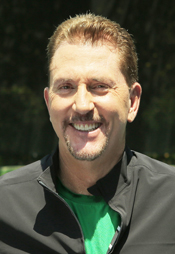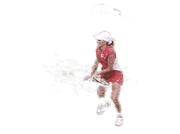Advanced Tennis: Sampras Serve
The Left Launch
John Yandell

In this series we've been looking at the complex interplay of elements in the service motion of Pete Sampras, possibly the best server in tennis history. These elements include Pete's perfect racket swing path, beautiful tossing arm motion, advanced footwork, and radical body rotation. (See Part 2, Part 3, Part 4, Part 5).
This article analyzes an additional, unique technical element in the Sampras motion - his explosion to the ball on an angle forward and to his left, "The left launch."
The left launch is shared to a certain degree by some other top servers, notably Mark Philippoussis. However, as with many other elements in his motion, Sampras appears to have taken the left launch toward it's technical extreme. The left launch is an important, advanced factor in his ability to produce a unique, heavy combination of speed and spin (See Part 1). In this article, any player or coach has the opportunity to understand this previously unrecognized factor for the first time.
So what, exactly, is the left launch? The left launch is a missile-like, explosive launch of Pete's entire body upward and outward to his left to reach the contact point. Pete is literally launching his body on a diagonal forward and to his left, so that his torso and legs leave the ground at an angle of about 60 degrees to the court.
 |
 |
 |
 |
Pete launches his entire body into his serve to his left and forward into the court on a diagonal of about 60 degrees. |
|
The left launch generates a contact point that is much further to the left than the traditional contact point taught in most lessons, but at the same time, a contact point that is still quite far in front of his body and well out over the court.
The result is smooth effortless power and racket head speed that maximizes or even increases the other core bio-mechanical elements in Pete's delivery.

Contact: Left and in Front
Looked at along an axis from left to right, the left launch contact point is about 3 feet to the left of Pete's service starting position. In relation to his own body, the ball is slightly to the right of the right edge of his head.
In this way, Pete's motion resembles a traditional heavy "kick" serve, used by many players on the second serve. Most advanced players and coaches are familiar with the idea of pulling the toss back to the left on the second serve to generate more spin.

But what makes Pete's contact point unique is that it also remains in front of his body and so far out over the court. Most kick second serves are based on a contact point close to the plane of the body, or even behind this plane. Pete's contact point has moved radically to the left, but at the same time is still about 3 feet out over the court.




